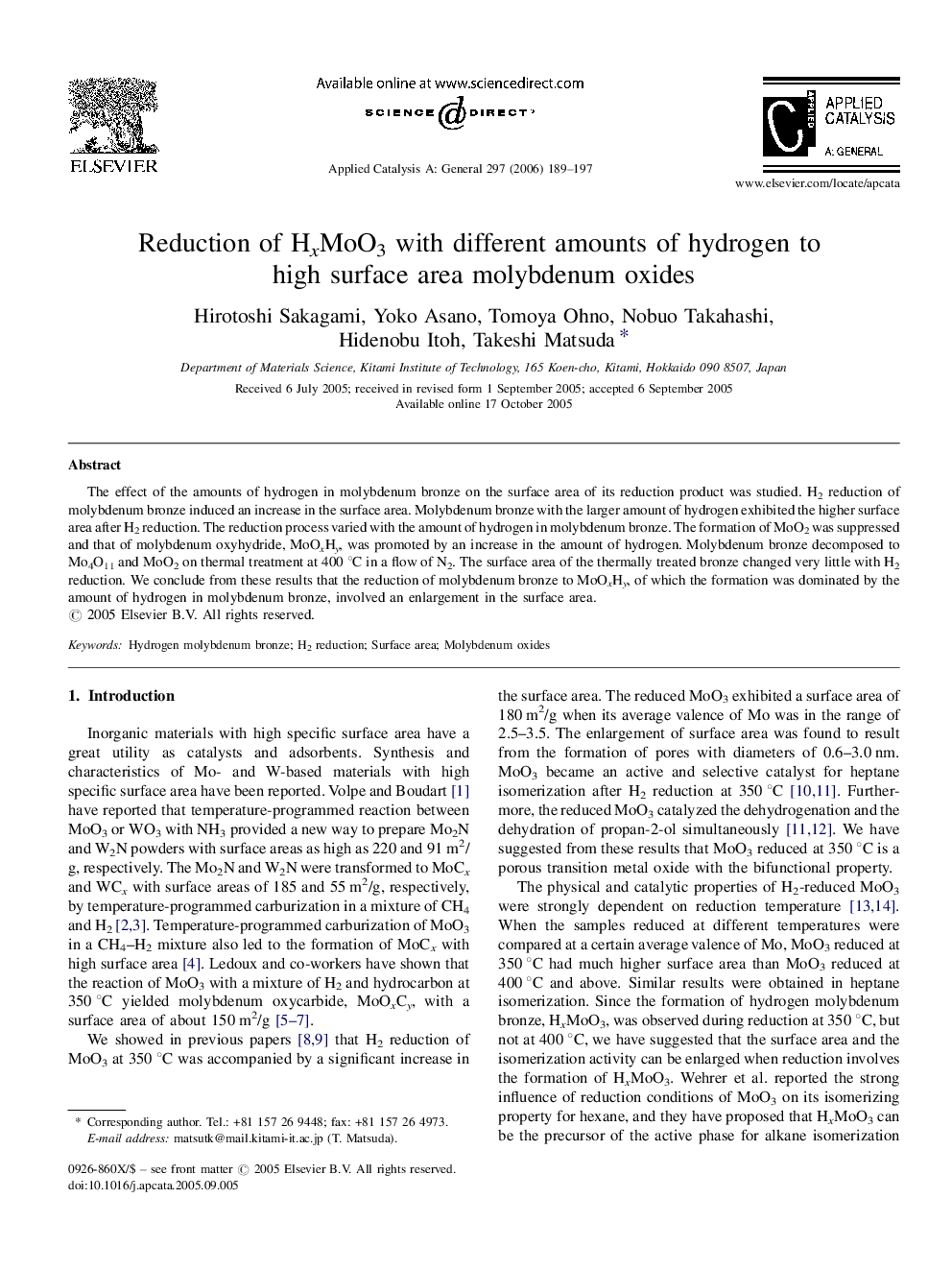| Article ID | Journal | Published Year | Pages | File Type |
|---|---|---|---|---|
| 44285 | Applied Catalysis A: General | 2006 | 9 Pages |
The effect of the amounts of hydrogen in molybdenum bronze on the surface area of its reduction product was studied. H2 reduction of molybdenum bronze induced an increase in the surface area. Molybdenum bronze with the larger amount of hydrogen exhibited the higher surface area after H2 reduction. The reduction process varied with the amount of hydrogen in molybdenum bronze. The formation of MoO2 was suppressed and that of molybdenum oxyhydride, MoOxHy, was promoted by an increase in the amount of hydrogen. Molybdenum bronze decomposed to Mo4O11 and MoO2 on thermal treatment at 400 °C in a flow of N2. The surface area of the thermally treated bronze changed very little with H2 reduction. We conclude from these results that the reduction of molybdenum bronze to MoOxHy, of which the formation was dominated by the amount of hydrogen in molybdenum bronze, involved an enlargement in the surface area.
